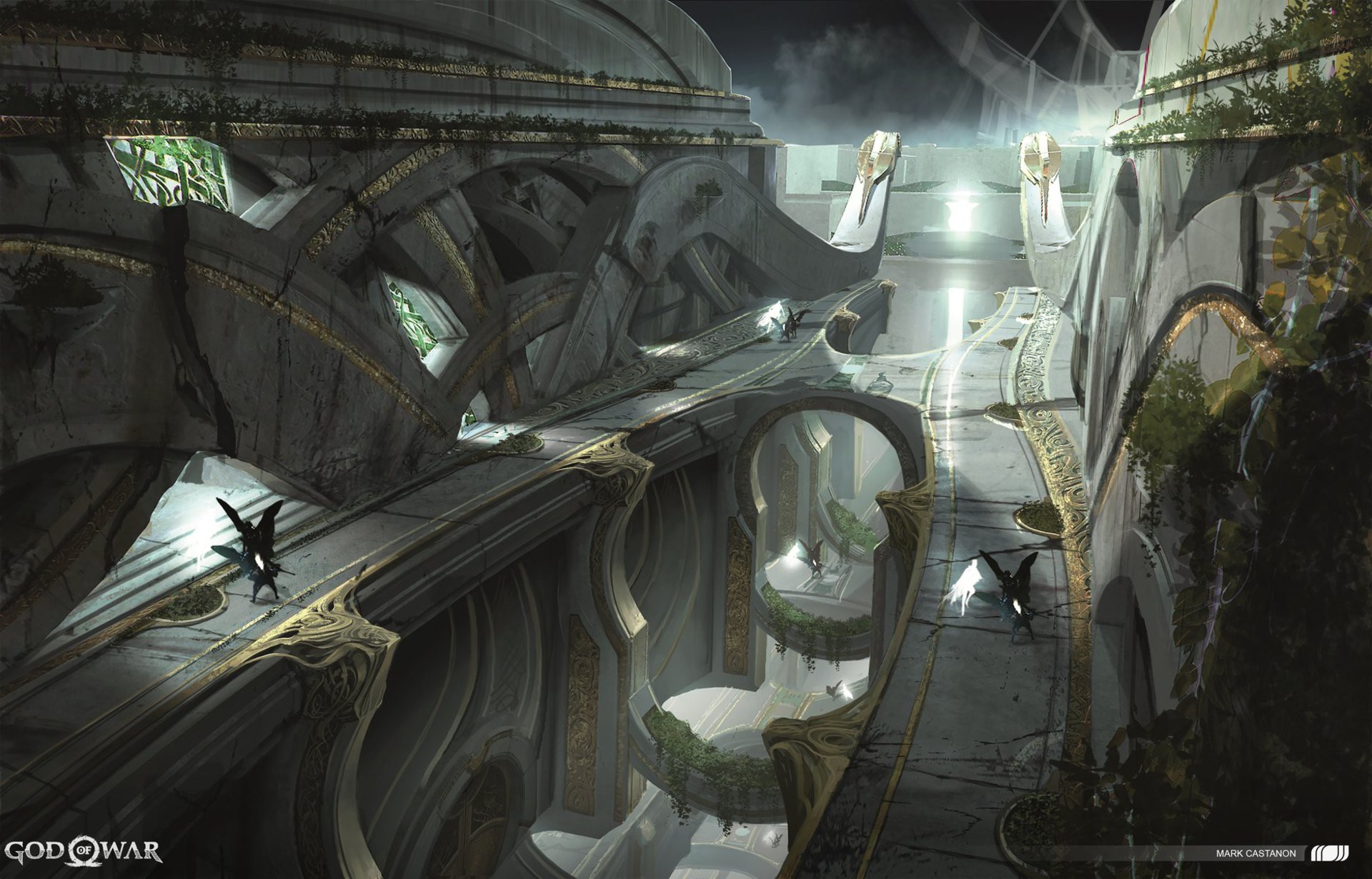We're excited to celebrate our official God of War Collection of game art prints, and notebooks. Our newest addition are these stunning God of War Notebooks! Take a look at them and then read on to get a deeper look into how Santa Monica Studio created God of War’s Alfheim.
Spoiler warning! We recommend playing through the game first before reading through this story.
A radiant, beautiful light constantly beckons you closer and closer in the middle of this strange realm. At the same time, you see a lingering darkness emerge throughout your adventure here as you see the Dark Elves fighting against the Light Elves. This is complemented by the architecture you come across, which is gorgeous, arch-laden, in marble and towering high over you. Then, a twisted, glowing red hive awaits you at the center point of your journey… a stark and patched together contrast to the beauty that you've witnessed. These are some of the strange, yet fascinating dichotomies you experience venturing through Alfheim, the first realm you get to explore outside of Midgard.
Spoiler warning! We recommend playing through the game first before reading through this story.
A radiant, beautiful light constantly beckons you closer and closer in the middle of this strange realm. At the same time, you see a lingering darkness emerge throughout your adventure here as you see the Dark Elves fighting against the Light Elves. This is complemented by the architecture you come across, which is gorgeous, arch-laden, in marble and towering high over you. Then, a twisted, glowing red hive awaits you at the center point of your journey… a stark and patched together contrast to the beauty that you've witnessed. These are some of the strange, yet fascinating dichotomies you experience venturing through Alfheim, the first realm you get to explore outside of Midgard.






